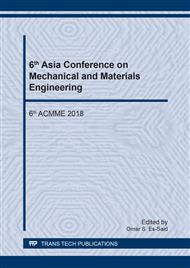p.124
p.129
p.134
p.140
p.147
p.154
p.159
p.165
p.170
Extraction and Characterization of Silica Powders from Natural Waste for Environmental Remediation
Abstract:
The present work describes the preparation and characterization of silica powder from the natural waste materials stink bean pod, Barbados pride pod, banana leaves, coconut shell, sugar palm shell and groundnut shell. Ash was produced by incineration of the natural wastes at 650 °C for 1, 3 and 5 h in atmospheric air. Silica was then extracted from the natural waste ash using 1 M sodium hydroxide solution to produce a sodium silicate solution from which silica was precipitated by adding 5 M hydrochloric acid solution. The results showed that the low content of residual carbon from the natural waste was incinerated at the optimal condition of 650°C for 5 h. FT-IR indicated that the as-prepared silica had Si-O-Si and Si-OH functional groups consistent with the XRF analysis, which detected SiO2 content between 73.76 and 95.72 wt%. In analysis of XRD and SEM, the as-prepared silica exhibited an amorphous, irregular shape and particle sizes in a range from 1 to 2 μm. The results obtained by the reported method proved that natural waste materials can be used for the production of valuable silica.
Info:
Periodical:
Pages:
147-153
Citation:
Online since:
October 2018
Authors:
Keywords:
Price:
Сopyright:
© 2018 Trans Tech Publications Ltd. All Rights Reserved
Share:
Citation:


